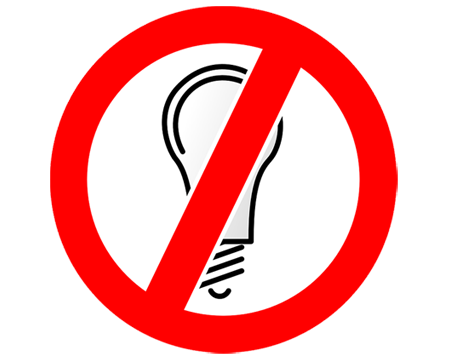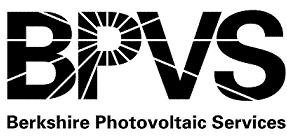Energy Conservation

PV and ENERGY CONSERVATION
Owners of the PV systems we’ve installed over the years often report their solar kilowatt hour (kWh) production and tell us of their efforts to reduce their overall use of electricity, especially of ‘dirty power’ from the grid. Replacing inefficient appliances results in savings, but behavioral changes in their electricity use often results in dramatic savings. We often hear how easy it has been for families to reduce their usage by 25% through energy efficiency and conservation measures.
Typically we size systems to cover at minimum 25% of a residence’s annual needs; in recent years, more customers are opting for larger PV systems to cover 50-100% of their needs. Add the conservation savings, and without sacrificing any comforts, a household can reduce its electricity bill and electrical energy environmental impacts profoundly. Many customers are net exporters in summer months. During our site assessment and the installation, we look for and educate our customers on energy saving opportunities.
Without question solar electricity is expensive. Depending on the level of incentives (from state tax credits, rebate programs, and federal tax credit), in the best case for our customers, each solar kWh costs 10.4¢ and in the case of a residential system with moderate battery storage capacity 26.4¢ per kWh. Complex PV systems in the 25-60 kW range with battery storage come in around $0.34 per kWh. This compares with current regional utility costs of, on average, .18¢ per kWh. Owning a PV system inspires a conservation consciousness which goes beyond dollar savings, reaching to the environmental ethic of our customers.
The following tips will help you save electricity, reduce your carbon and harmful emissions footprint and your electric bill.
kWh, kW, W…What does it all mean?
A kilowatt hour (kWh) is a standard unit that measures how much electricity is used in a time period (ex: a month or year)
A kilowatt (kW) is a standard unit to measure how fast electricity is being used at any moment. To consume 1kWh in 1 hour means you are using electricity at an average rate of 1000 watts or 1kW
A Watt is a measurement of total electrical power. Volts x amps = watts.
What is a kilowatt hour (kWh) worth?
Each kilowatt hour of regular electricity used (the coal, oil, natural gas mix), emits ~1.5 pounds of Carbon dioxide (CO2) to the atmosphere. The average house in New England uses about 8,000 kWh of electricity annually, emitting 12,000 pounds of C02 into the atmosphere. These emissions could be avoided by switching to renewable energy such as solar or wind power. C02 is the primary emission causing climate change.
Even if C02 was not the very serious threat to life as we know it on Earth – there are a host of nasty emissions from ‘dirty power’. Sulfur dioxide and Nitrogen oxides contribute to acid rain and health problems. Mercury and other heavy metals result from coal fired electric power plants. Nuclear power plants emit radioactive particles, and of course, present a waste hazard measured in millennium.
- UNPLUG
- Unplug your chargers and converters. Every house is full of ‘wall warts’ (those large plastic converters which supply electricity to charge batteries in cell phones, PDA’s, digital cameras, cordless tools and other personal gadgets). Ever notice how warm they feel – that’s wasted electricity. Keep these wasteful loads at a minimum by unplugging them after a device is fully charged or until you need them.
- Use power strips to switch off televisions, computers, printers, home theater equipment, and stereos when you’re not using them. Even when you think these products are off, together, their ‘stand-by’ consumption can be equivalent to that of a 75 or 100 watt light bulb running continuously. These are often called ‘phantom’ loads.
- SET COMPUTERS TO SLEEP & HIBERNATE MODE
- Enable the ‘sleep mode’ feature on your computer, allowing it to use less power during periods of inactivity. The power management settings are found on your control panel.
- Configure your computer to ‘hibernate’ automatically after 30 minutes or so of inactivity. Allowing your computer to hibernate saves energy and is more time-efficient than shutting down and restarting your computer from scratch. Shut it down completely when you’re done for the day.
- Keep printers, scanners and peripherals unplugged until you need them.
- DON’T FORGET THE LIGHTS
- Lighting accounts for about 15% of household energy use. If you swap the standard incandescent light bulbs for energy-saving LEDs, you can save roughly $160 each year on electricity! When purchasing light bulbs check the lumen per watt ratio. This will tell you how much light you will get per watt. When calculating your potential savings we used an LED that is 5 times as efficient as an incandescent light bulb, but they can get up to 12 times as efficient. Don’t forget to turn off lights that aren’t being used and utilize natural light as often as possible.
- USE APPLIANCES EFFICIENTLY
- Set your refrigerator temperature between 38-42 degrees Fahrenheit; your freezer should be set between 0-5 degrees Fahrenheit. Use the power-save switch if your fridge has one, and make sure the door seals tightly. You can check this by making sure that a dollar bill closed in between the door gaskets is difficult to pull out. If it slides easily between the gaskets, often a thorough cleaning of the gasket and refrigerator metal surface it seals to will tighten the seal. Most refrigerators will have adjustable hinges that can help improve the seal. It also helps a lot if the refrigerator is perfectly level. If the gaskets are still not sealing properly call the manufacturer for a replacement set.
- Use your fridge as an icebox: In winter, freeze a container 3/4 full of water outdoors and place it in the fridge compartment (half gallon milk containers are perfect). Doing this once a day can reduce your refrigerator’s electricity use by 20% during the winter.
- A full freezer and empty refrigerator are most efficient; get rid of old leftovers and do not refrigerate items that do not require cooling.
- Wash only full loads in your dishwasher; this saves water and the energy used to pump and heat it. Air-drying can also reduce energy use.
- In your clothes washer, set the appropriate water level for the size of the load and wash in cold water. A clothes- line is the most energy-efficient way to dry your clothes! A clothes rack works just as well indoors in the winter.
- Electric Hot Water Heaters: Going away for more than a day? Don’t forget to shut off the water heater at its dedicated circuit breaker in your Electric Service Panel. A single or two person household with a 55 gallon or larger electric water heater tank that is well insulated will find they have plenty of hot water by only turning on their hot water heater for a few hours every two days.
- Going away for an extended period in the winter? Don’t make the common mistake of turning your furnace or boiler thermostat down but leaving your hot water heater on. No matter how it is fueled, its heat loss in a cooler home will result in excessive energy use.
- Keep in mind that hot water is not only in the tank – it is in all hot water pipes in your house – some may run through very cold spots. A convective loop in piping will constantly rob heat and cause the hot water heater (whether oil, gas or electric) to use more energy. Consider installing a solar hot water system or an on demand hot water heater. Insulate hot water pipes.
- If you run a de-humidifier in the warmer months, experiment with shutting it off at certain times during the day. You probably don’t need to run it all day to keep relative humidity down between 30 and 50%. Why are you running a de-humidifier? One of our customers had a puddle that banked on their foundation after every rainstorm and during thaws. The simple measure of adding a wheelbarrow load of loam and sloping the area away from the house stopped their damp basement woes. Additionally, this allowed their de-humidifier to be turned off, saving $40 per month in electricity. For another customer, a roof gutter solved the moisture problem in their basement. For several customers, simply making a tight cover over their basement sump pump well (to prevent evaporative moisture transmission to the basement) meant they could turn off the de-humidifier.
- TAKE CONTROL OF YOUR TEMPERATURE
- Set your thermostat in winter to 68 degrees Fahrenheit or less during the daytime and 55 degrees Fahrenheit before going to sleep. During the summer, set thermostats to 78 degrees Fahrenheit or more.
- Use sunlight wisely. During the heating season, leave shades and blinds open on sunny days, but close them at night to reduce the amount of heat lost through windows. In the summer, close shades and blinds during the day and open them at night.
Rural Customers: Don’t forget your well Water Pump-
Back flow valves, which are located at the well pump and before the pressure gauge, may stick open. This makes the pump work overtime and is a common cause of dramatic electricity use increase. Look at the pressure gauge when no water taps are on. If the pressure is steadily decreasing, call a plumber.
Below are some examples for wattage for various household appliances:
- Clock radio = 10 watts
- Coffee maker = 900-1200 watts
- Clothes washer = 350-500 watts
- Clothes dryer = 1800-5000 watts
- Dishwasher = 1200-2400 watts (using the drying feature greatly increases energy consumption)
- Dehumidifier = 785 watts
- Fans
- Ceiling = 65-175 watts
- Window = 55-250 watts
- Hair Dryer = 1200-1875 watts
- Heater (portable) = 750-1500 watts
- Microwave oven = 750-1100 watts
- Personal computer
- CPU – awake/asleep = 120/30 watts or less
- Monitor – awake/asleep = 150/30 watts or less
- Laptop = 50 watts
- Radio (stereo) = 70-400 watts
- Refrigerator (frost-free, 16 cubic ft) = 725 watts
- Televisions (color)
- 19″ = 65-110 watts
- 27″ = 113 watts
- 36″ = 133 watts
- 53-61″ Projection = 170 watts
- Flat screen = 120 watts
- Toaster = 800-1400 watts
- Toaster oven = 1225 watts
- VCR/DVD = 17-21 watts/20-25 watts
- Vacuum cleaner = 1000-1440 watts
- Water heater (40 gal) = 4500-5500 watts
- Water pump (deep well) = 250-1100 watts
Formula for Estimating Energy Consumption
Use this formula to estimate an appliance’s annual energy use and annual cost:
(Wattage x Hours Used Per day x # Days Per Year) / 1000W = Annual Use Kilowatt Hours (kWh)
Annual Use (kWh) x Local Utility Rate Per kWh Consumed (eg: 11.79¢) = Annual $/year
Example: Window fan
(200 Watts x 4 hours/day x 120 days/year) / 1000 = 96 kWh
96 kWh x 11.79¢ = $11.32 per year
Take the First Steps!
Since 1985, Berkshire Photovoltaic Services Inc. (BPVS) has designed and installed hundreds of innovative Photovoltaic (PV) Systems in the area. We favor reliable equipment and PV components manufactured regionally and by established manufacturers. Our reputation for excellence and prompt service complements the ethos of our environmentally minded customers. Our business could not have thrived this long without their references and example.
All information shared with BPVS will be kept strictly confidential, and for BPVS use only.
Please see our Privacy Policy for further details.
Contact BPVS
60 Roberts Drive Ste. 109 North Adams, MA 01247
413-664-0152
info@bpvs.com
